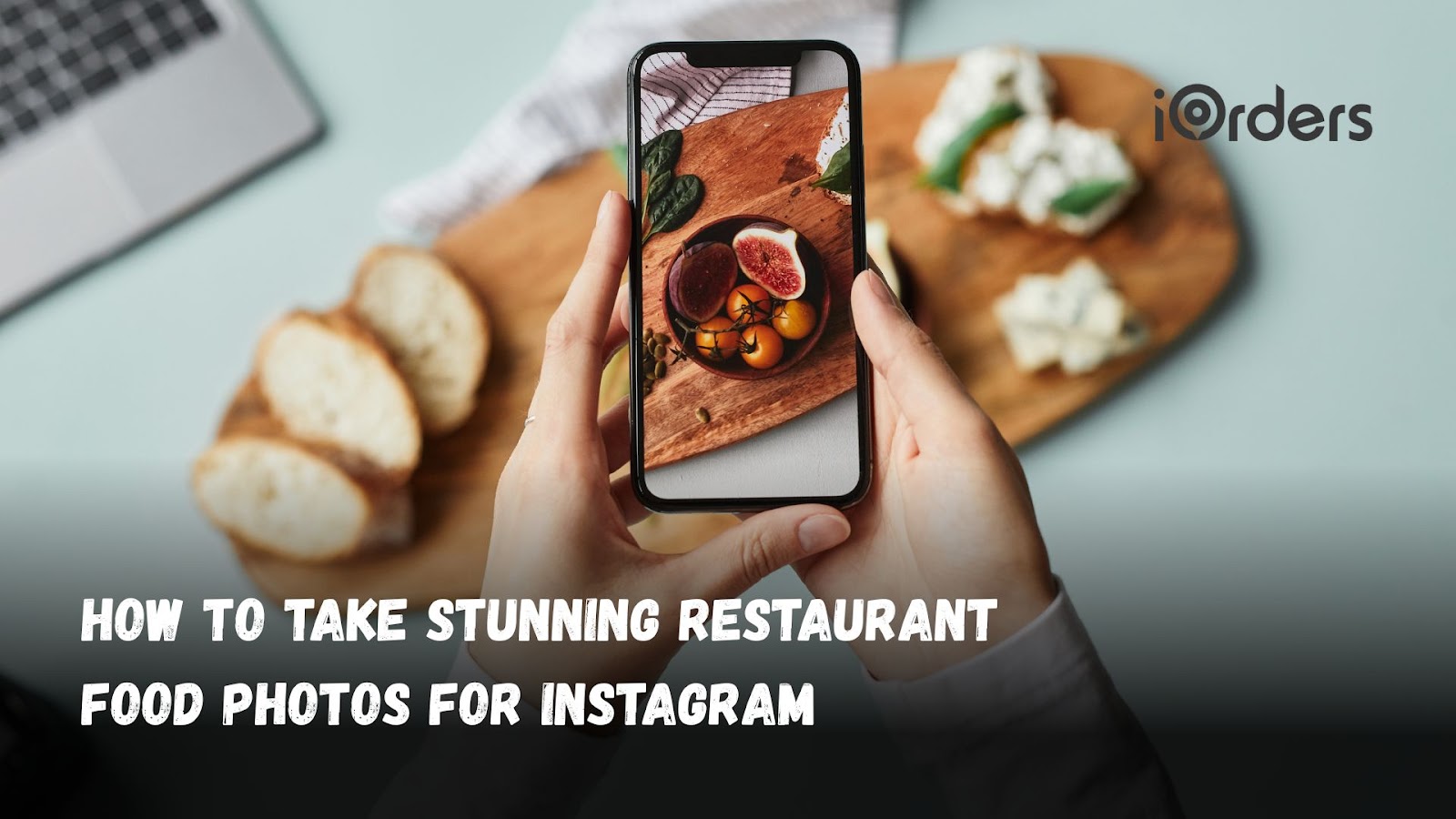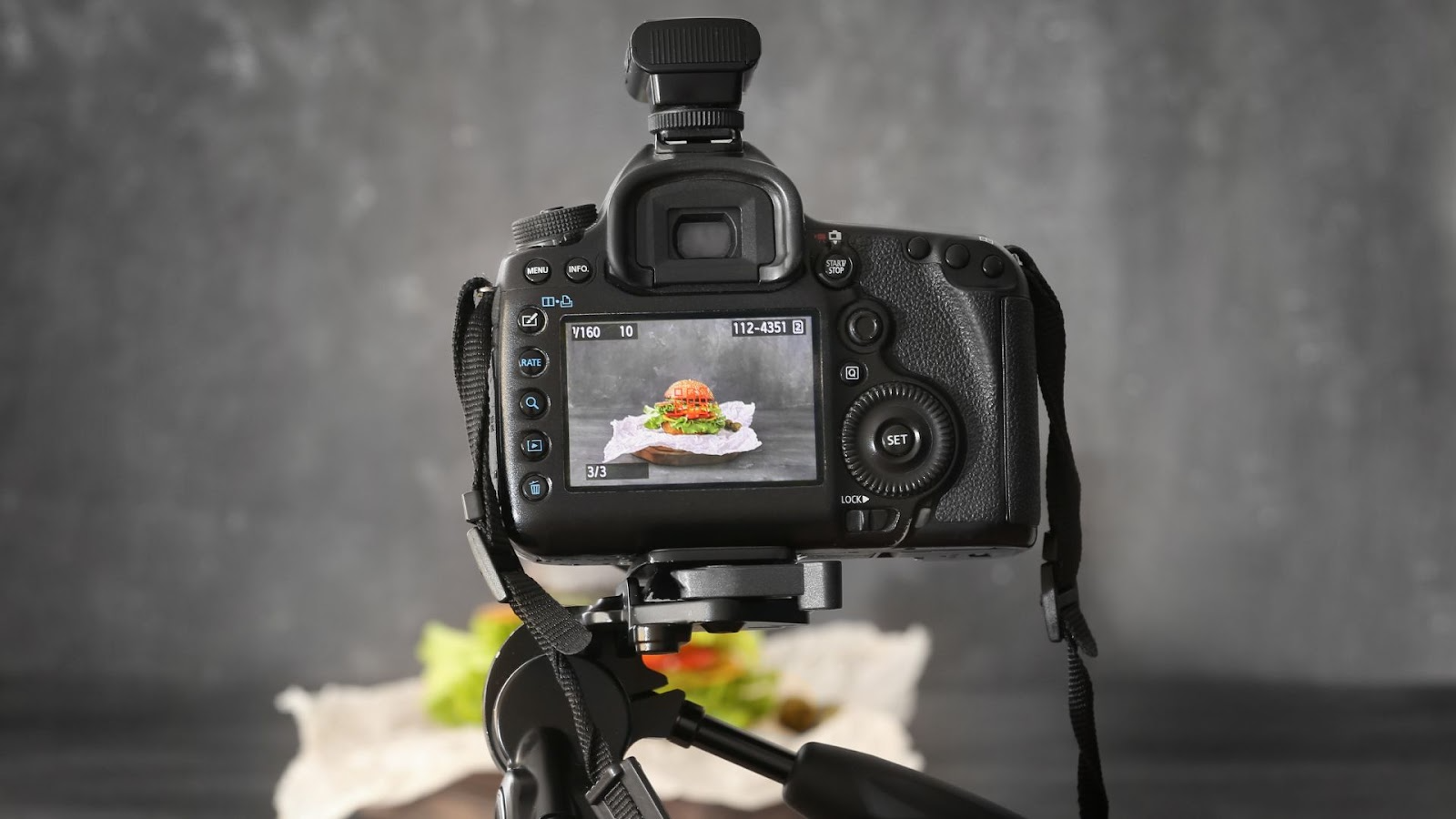September 26, 2025

Capturing the perfect food shot in a restaurant can feel like an art form—something many Instagram lovers and food bloggers are always perfecting. It’s not always easy, especially with tricky lighting and the hustle of a busy dining room.
Here's the good news: natural light can be your best friend in elevating the appearance of your dishes and making them stand out on camera. In this blog, you’ll learn how to make the most of natural light and incorporate creative composition techniques to take good food pictures.
With a few practical tips, you’ll be able to bring clarity, stability, and creativity to every shot, plus know when to turn to alternative lighting for that flawless photo. Ready to take your food photography skills to the next level? Here we go!
Key Takeaways

Alt text: Importance of stunning Food Shots
In the digital age, visual content plays a crucial role in shaping consumer behavior. A study found that over half of respondents (53.3%) are more likely to revisit a restaurant if the food looks appealing in photographs. Food photos significantly influence consumers when choosing a dining option. Additionally, restaurants that incorporate high-quality images into their online menus have experienced a noticeable increase in sales.

Alt text: Tips on How to Take Good Food Pictures
Capturing high-quality food photos is essential for restaurants aiming to attract customers, especially on visually-driven platforms like Instagram. As a restaurant owner, understanding how to highlight the beauty of your dishes can make a difference in your online presence and customer engagement.
Here are 10 expert tips that will help you take stunning food photos.
Natural light is one of the best ways to make your food photos pop. It brings out the true colors and textures of your dishes, giving them a fresh and appetizing look. Unlike artificial lighting, which can create harsh shadows or unnatural color tones, natural light softens the overall image and highlights the natural beauty of the food.
Optimizing your camera settings is crucial to capturing high-quality food photos. Whether you're using a DSLR or a smartphone, understanding how to adjust key settings like exposure, aperture, and ISO can improve the clarity and detail of your shots. Proper settings ensure that your photos are crisp, well-lit, and true to life, highlighting the textures and colors of your dishes.
Composition is key to creating visually appealing food photos. By considering elements like framing, angles, and symmetry, you can turn an ordinary shot into a captivating one. A well-composed image draws the viewer’s eye to the dish, making it look even more appetizing and encouraging engagement.
Texture and layers are essential to making your food photos visually appealing and realistic. Adding texture brings out the details of your dish, creating a more inviting and relatable image. Whether it’s the crispy crust of a pizza or the creamy sauce on pasta, highlighting these textures can make your food look more irresistible.
Including human elements in your food photos can make them more relatable and engaging. Whether it's a hand reaching for a dish, a person enjoying a meal, or the act of serving, these moments add life to your images and connect with viewers on a personal level.
Capturing close-up shots allows you to highlight the intricate details of your dish, bringing out textures, colors, and freshness that a wide-angle shot may miss. These shots not only enhance the visual appeal of your food but also evoke a more sensory experience for your audience. Close-ups are perfect for showcasing the quality and craftsmanship of your dishes.
Achieving sharp, focused food photos is essential to creating high-quality content for your restaurant’s Instagram. Stability and focus are the cornerstones of crisp, clear images that capture the true beauty of your dishes. Even slight camera shake or out-of-focus areas can detract from the overall appeal and professionalism of the photo.
Food photography isn’t just about capturing the dish; it’s about telling a story. Whether it’s the process of cooking, the experience of dining, or the tradition behind the dish, incorporating elements that tell a story can make your food photos more engaging. Storytelling shots give your audience a deeper connection to the food and make the experience feel more personal and authentic.
Color contrast is a powerful tool in food photography that can make your dishes pop and create visually stunning images. The right balance of colors not only adds vibrancy but also creates an aesthetic harmony that guides the viewer's attention.
Post-processing is an essential step in food photography, allowing you to enhance colors, adjust lighting, and fine-tune details. However, it's important to edit thoughtfully to maintain the natural look of your dish while making it visually appealing.
Adjust brightness and contrast to ensure proper lighting and vibrant colors without overexposure.
Exceptional food photography builds the visual foundation of your restaurant's digital presence, attracting customers through stunning imagery. However, converting that visual appeal into actual orders requires a technology that can handle everything from online ordering to customer retention seamlessly

Just like how stunning food photography strengthens your restaurant's brand presence, a seamless digital solution is equally essential for engaging your customers and boosting your business. By integrating iOrders into your restaurant, you can not only improve your online ordering system but also build stronger relationships with your customers.
Capturing stunning food photos, utilizing natural light to optimize camera settings, composition, and editing, each step plays a crucial role in elevating your food photography. As food is often the first thing consumers notice when deciding where to dine, high-quality food images can significantly impact customer engagement, brand visibility, and sales. By following these expert tips, you’ll be able to create visually appealing, Instagram-worthy photos that capture the essence of your dishes and entice potential customers to visit your restaurant.
iOrders.ca offers commission-free online ordering, customizable mobile apps, and powerful marketing tools to help your restaurant stand out and drive more sales. Book a demo today to see how iOrders can take your restaurant’s digital presence to the next level.
1. How to complement a food picture?
To complement a food picture, focus on the colors, textures, and presentation. Appreciate how the dish looks inviting, vibrant, or perfectly plated, and highlight its visual appeal in a way that makes the viewer want to try it.
2. How do I caption delicious food?
Captions for delicious food should evoke sensory experiences. Use descriptive words that emphasize taste, aroma, and texture, and consider adding humor or storytelling to connect with your audience. A simple, "The perfect bite," or "Fresh from the oven!" can go a long way.
3. What are the best hashtags for food pics?
Popular hashtags like #FoodPorn, #InstaFood, #Foodie, #FoodPhotography, and #Yummy can help increase visibility. You can also include niche-specific hashtags like #HealthyEats or #VeganFood, depending on your dish’s category.
4. What is the most photographed food on Instagram?
Dishes like pizza, burgers, and sushi often top the list as the most photographed foods on Instagram. Their vibrant colors and visually appealing arrangements make them perfect for social media sharing.
5. What are the trends in food photography?
Trends in food photography now include minimalist backgrounds, overhead shots, natural light usage, and the incorporation of action shots (like pouring sauce). Additionally, there’s a growing preference for authentic, unstyled images that highlight the natural beauty of the food.